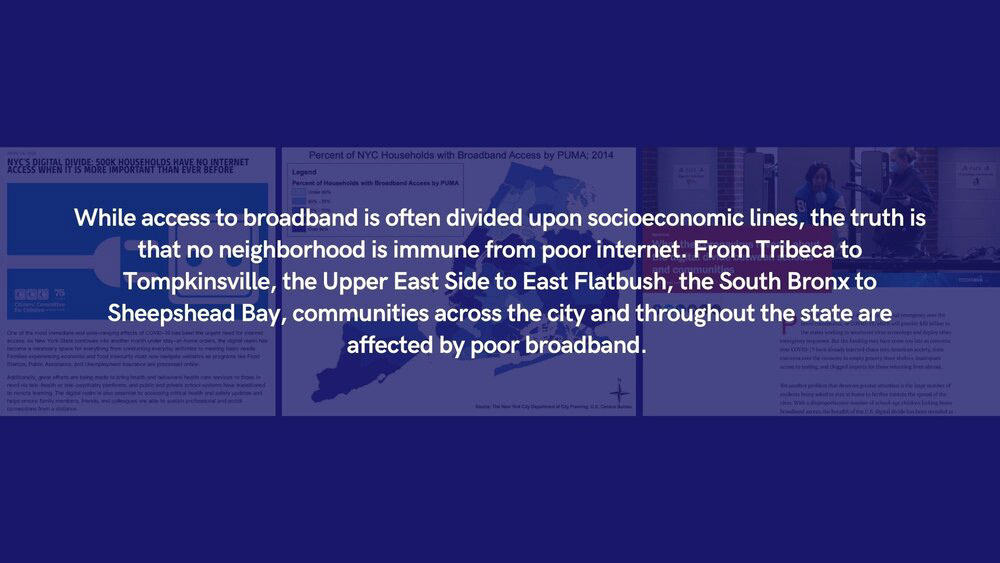Data Visualization, Data Mapping, Research Proposals, Visual Communication
Redlining is a discriminatory practice that puts services (financial and otherwise) out of reach for residents of certain areas based on race or ethnicity. It can be seen in the systematic denial of mortgages, insurance, loans, and other financial services based on location rather than on an individual’s qualifications. Notably, the policy of redlining is felt the most by residents of minority neighborhoods.
The Divide and Impact of Covid
The effect of NYC's digital divide was visible at a large extent especially during the Lockdowns and work and study from home models. The covid 19 pandemic has exposed how digital divide truly affects populations especially the marginalized minority populations. Internet services and infrastructure form important factors that assess the quality of life. Redlining has affected this access just like banking and insurance systems.

The Disparities
An important thing to remember for us was that, While access to broadband is often divided upon socioeconomic lines, the truth is that no neighborhood is immune from poor internet. Though not significantly, The north to south and east to west were affected by poor broadband

Research Question
With some basic sense of the possible connection between redlining and internet access and usage, our Research Statement was How has Redlining influenced Internet access in NYC?

Data Sets
With some basic sense of the possible connection between redlining and internet access and usage, our Research Statement was How has Redlining influenced Internet access in NYC?


We realized that as a city asset, Wifi hotspots and NYC links play an important role in people’s daily lives



Patterns
We directly compared the broadband adoption in NYC in 2020 with the redlining map. It turns out the digital divide in NYC is following the redlining patterns until now, especially the home broadband, which is heavily relied on the infrastructure around and city location.









Limitations
The data available for public redlining is of 1930s. It is from a time when Internet didn't even exist. From a survey conducted in early April this year, we can see roughly half of adults in American feel Internet is important to their daily lives now so Internet is something that is one of the very new necessities that is defined in the 20th century, even nowadays. We can't see how Internet transition over years and it is an invisible asset as compared to parks and stuff. There's only one chunk of data so the limitation here is that we're comparing a very old visible data to a new invisible data.

Another limitation here is that Internet is not one resource, it is multiple, combined with broadbands, hotspots, public Wifi, mobile phones, routers, etc. The question of what should be considered as accessibility to Internet is very subjective. Assessing what access to Internet makes sense the most was difficult to us.

Purpose
Like Deputy Mayor of NYC, Phillip Thompson said, not having access to the internet in 2020 is like not having access to public education was in 1950. It closes paths to opportunity and makes our economic and racial divides even greater. This study helps us to understand the factors and influences behind NYC's plan of equal accessibility for Internet and redlining is a major factor which directly affects this kind of service provided. We're learning why these policies and decisions are being made.
